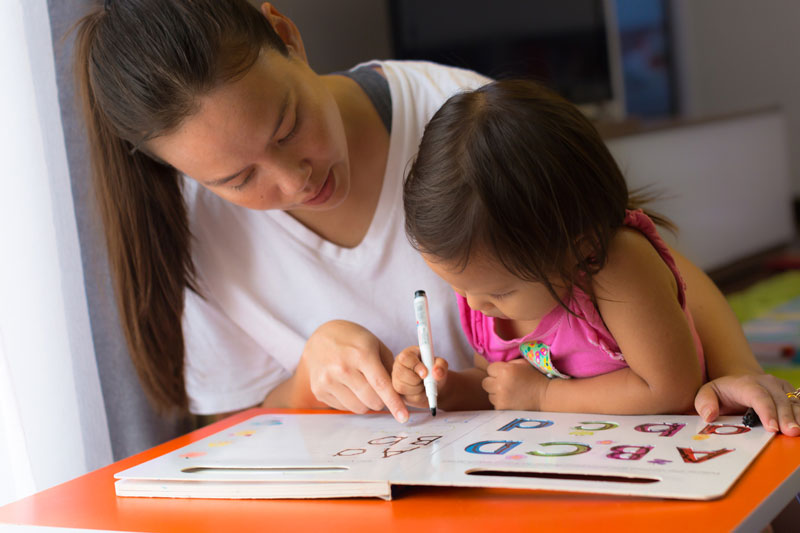
There is a need for inventive ways to teach children how to read and write, especially since it is a process that begins at infancy. Children should learn from an early age these essential skills through interesting ways that make learning a fun process. A child’s literacy skills are developed from singing, playing, drawing, and storytelling; hence, it is an everyday activity. The article aims at providing some creative ideas that can be used to teach children how to read and write. Caregivers should analyze a child’s receptivity to reading and learning to ensure that their intentions to learning are genuine. For example, when seeking advanced assistance, some have turned to EssayService to write essay for me, highlighting the importance of professional help in the learning process.
Worry not, if all else fails, My Essay Geeks will come to the rescue.
Use phonics
Children should know how to decode letters for them to arrange them to words systematically. Phonics involves teaching children how to make sounds using the letters. They systematically recognize the sounds and combine the letters to make words with different sounds. They use this knowledge to identify new words and how they are pronounced and ultimately how they are written. It is crucial for a child to identify the sounds rather than the letters to avoid reading difficulties in the future. When children identify these sounds, they can read unfamiliar words on their own hence they establish the link between written words and their spoken knowledge. Phonics assists children in identifying letters and words by sight which ultimately leads to fluency in reading and writing.
Reading fun storybooks
Arguably, in the digital age, parents prefer giving their children electronic devices to acquire stories from the internet rather than reading with them and to them. Does this have an impact on the child’s writing and reading skills? The answer is not definite. However, the process is not as efficient as reading about stories in books and discussing them. Children require motivation and support and teachers will often encourage them to read books and ask questions about the story and the characters. To improve their reading skills, it is important to point out simple words and let them sound them out or even better, let them create their storybook. “This not only taps into their creative skills but also focuses on their writing and drawing skills and makes them make use of their imagination,” says Melissa Thatcher, Academic Instructor at ConfidentWriters. Teachers and parents can also make children point out any new word that they have learned from their reading activities either on street signs or in magazines.
Reading and writing games
For children to effectively learn literacy activities, they should be engaged in a positive way. Language games engage the students while simultaneously teaching them how to read and write words. The alphabet relay is one of the ideal games for young learners to learn the alphabet and their respective sounds. The game involves two teams who are lined up, and the first members of each team are given a pen to write on the whiteboard. Once the teacher identifies which letter they should write, they run to the board and write it then back to their members to give the next person the pen. This game encourages the students to think fast, work as a team and write better on their own. Other games such as the ‘Guess It’ allow students to guess letters that make common words. The teachers divide the children into groups, and the team that correctly blends the words gets points, and the winning team is ultimately rewarded.
Be an example
Becoming an avid reader, especially as a caregiver, encourages children to engage in reading and writing. “When children see that reading and writing are also adult activities, they have the passion and love for participating in these literacy activities as well,” notes Ashley Roth, Literacy Support Mentor at Paper-Research. As they read, it is also essential for caregivers to encourage them on how to identify common words, how to use their imagination and how to use the information they have obtained to communicate. When children engage in reading with their caregivers, they find the task enjoyable. This can be an everyday task where caregivers can make meals and ask the child to assist in reading out the recipe book or even nightly bedtime stories that can be accompanied by brief questions to test the child’s listening and comprehension skills. A child should be taught with love and should not be pushed too hard to acquire reading and writing skills.
This article exhaustively highlights some of the creative ideas that caregivers can integrate into their learning strategy to ensure that students learn how to read and write. Phonics forms the basis of any reading activity, and its efficacy is tested through reading storybooks and playing reading and writing games. However, teaching is not a ‘one-size-fits-all’ process, and what works on one child may fail to work on another. It is crucial for caregivers to assess children from an individual level and engage with their teachers to understand how they can support them to augment their literacy skills.



























